New York City, The City That Never Sleeps is busy as always. It is indeed an urban wanderer’s delight. You can lose yourself in the crowds of Manhattan, enticing boutiques and coffee-tasting among the craft-minded scenesters, or delve into festive night parties and the cutting-edge art galleries. Everyone finds something for themselves.
If you pay attention to what is happening around you may find an absolute different inspiration in it. Paul Villinski, an American sculptor whose works are presented in the National Soaring Museum and the Museum of Arts and Design in New York, finds inspiration in the crushed beer cans found in NYC streets.
I want to take these humble, damaged, discarded things and find out what they are capable of - what can be done with imagination, commitment, risk, labor -- with enough love. My work is an exploration of the possible, at the heart of which is hope.
(c)Paul Villinski
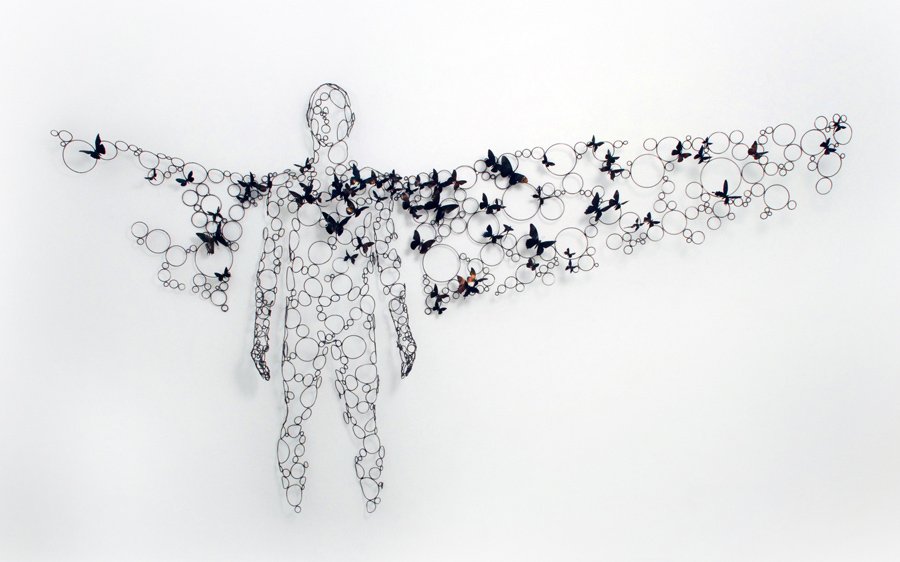
Image Source
The sculptor says that behind the screen of eternal business and endless deeds, mankind does not notice the abyss into which it falls.
At the same time he does not lose hope in humanity. He continues to create his amazing art in hope that people will finally "wake up " and realise that they are not alone in this world and that everything they do has an effect on the surrounding world, especially animals and insects.
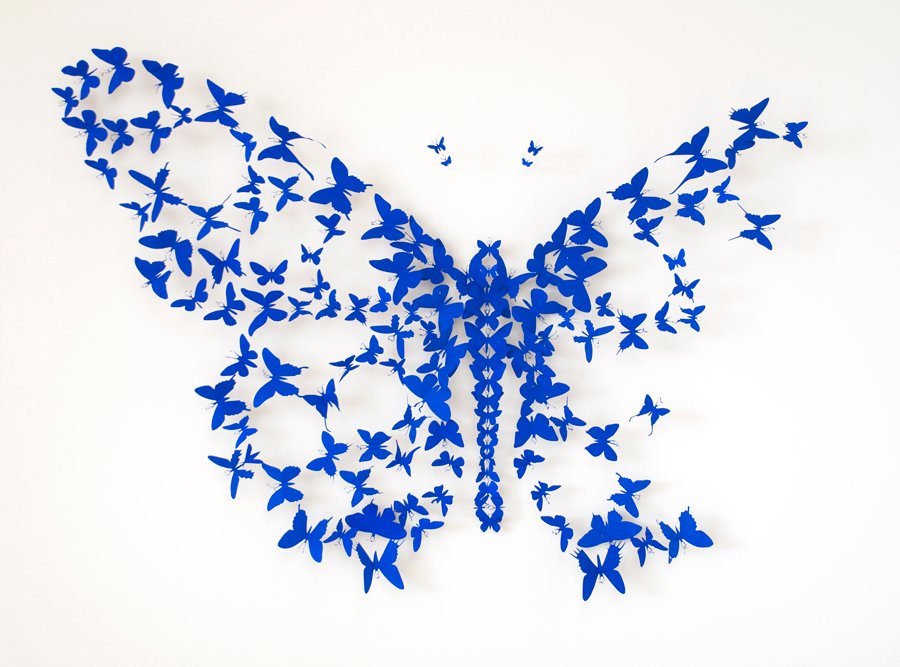
Image Source
“I want to create images and experiences that allow viewers to ‘identify,’ to feel our commonality, to know that they are not alone.”
(c)Paul Villinski
His sculptor creates his works from abandoned objects, which he finds on the streets of New York. Lost gloves; crushed beer cans; old vinyl LP's; discarded shipping pallets find their new life in his creations.
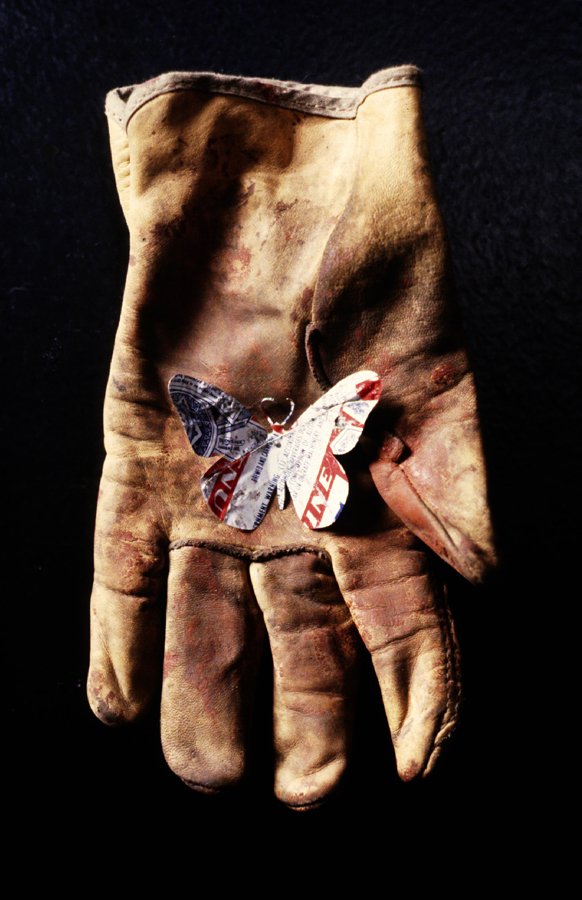
I try to practice a "simple alchemy," attempting to give these cast-off, "worthless" objects surprising new identities, to infuse their stories with new layers of meaning.
(c)Paul Villinski
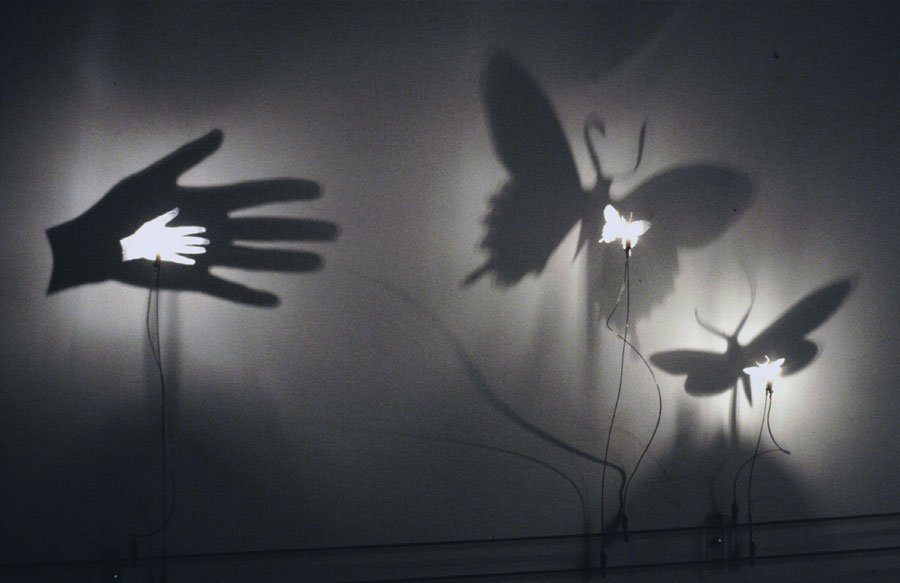
Image Source*
Art as a meditation
Art is like meditation. The artist sinks into his world to create a new art. The viewer looks at an artist's creation and dives into his world and sees something of his own. According to the wonderful @nehab "Understanding of art creates both - the painter and the viewer. And both are artists". I think it is a perfect metaphor to the process.
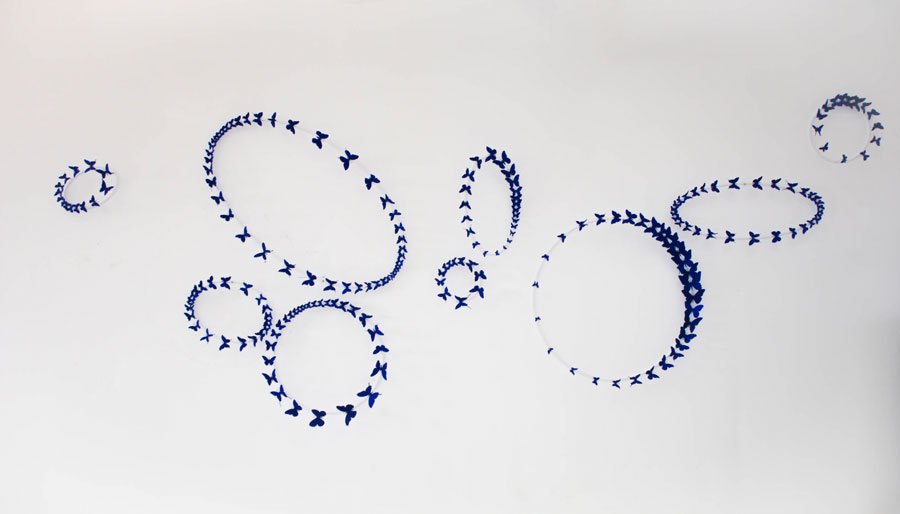
Image Source
I am drawn to humble, yet evocative materials; in this case, crushed beer cans… My process of “recycling” them into images of butterflies is a quiet physical meditation, a yoga of tin snips and files and fingers.
(c)Paul Villinski
IF we were able to understand the full picture…
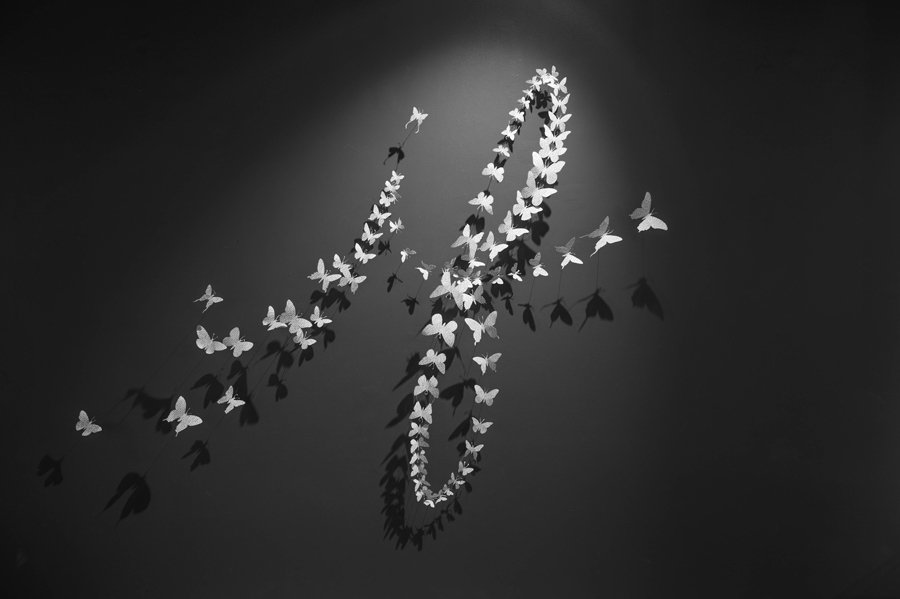
Image Source
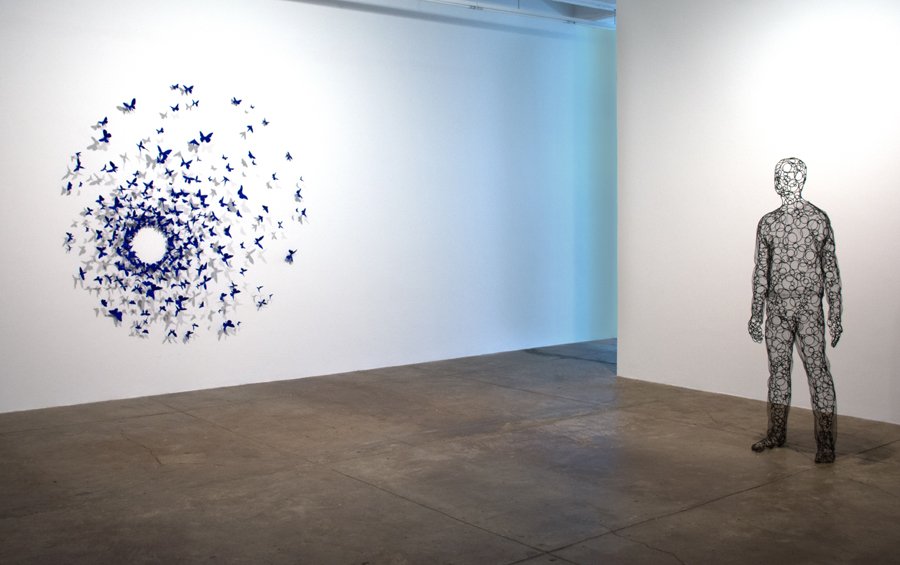
Aluminum (found cans), wire, Flashe; 80” x 80” x 9”
Image Source
…I hope to suggest that the frailty of butterflies, and their utter dependence on appropriate habitat, mirrors our own tenuous condition. Yet we ignore our connection to nature … When we bulldoze the rainforest, liquefy glaciers, pump mountains of carbon into the sky, erase tens of thousands of species, we do this to ourselves. There is no separation - we are the butterflies.
(c)Paul Villinski

In order to realize our unity with all living things, one must be aware. It is necessary to understand that we can not exist without them, what each plant, insects and animal have their own unique mission to maintain a balance on the Planet. And that their gradual disappearance can only reflect the reality that awaits us.
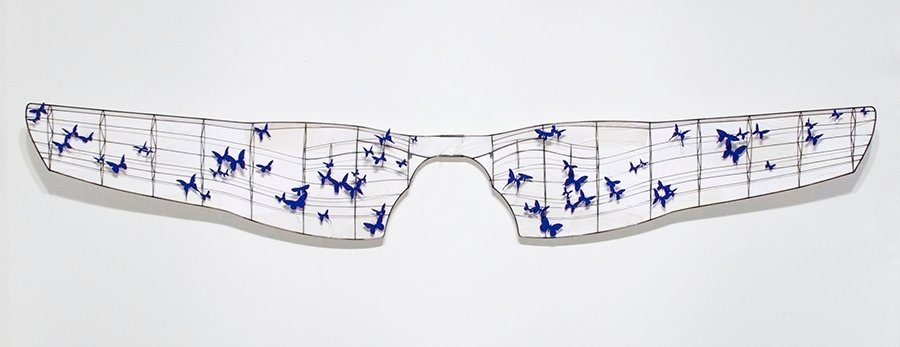
Image Source
And that if we do not think about it here and now, instead of living butterflies in the future of our children there will be butterflies made of garbage, which we do not care now.
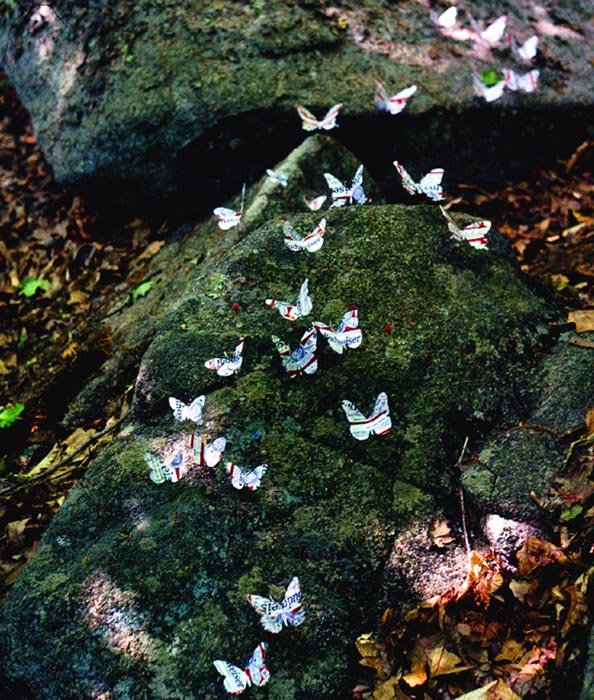
Image Source
However, I also have hope in humanity. I believe it will able to realize simple truths and transform itself as easily as a butterfly flies out of the cocoon to meet a new, more colorful life.
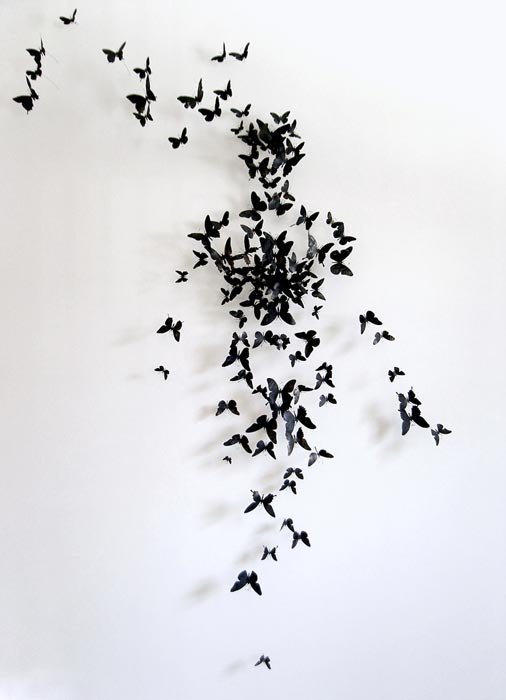
Image Source
The beauty that interests me most comes through the struggle to bring things from a place of loss, poverty, despair, into a new life -- to insist on the possibility of transformation.
(c)Paul Villinski
They say: “Art will save the World.” I think thanks to artist like Paul Villinski THERE IS HOPE.
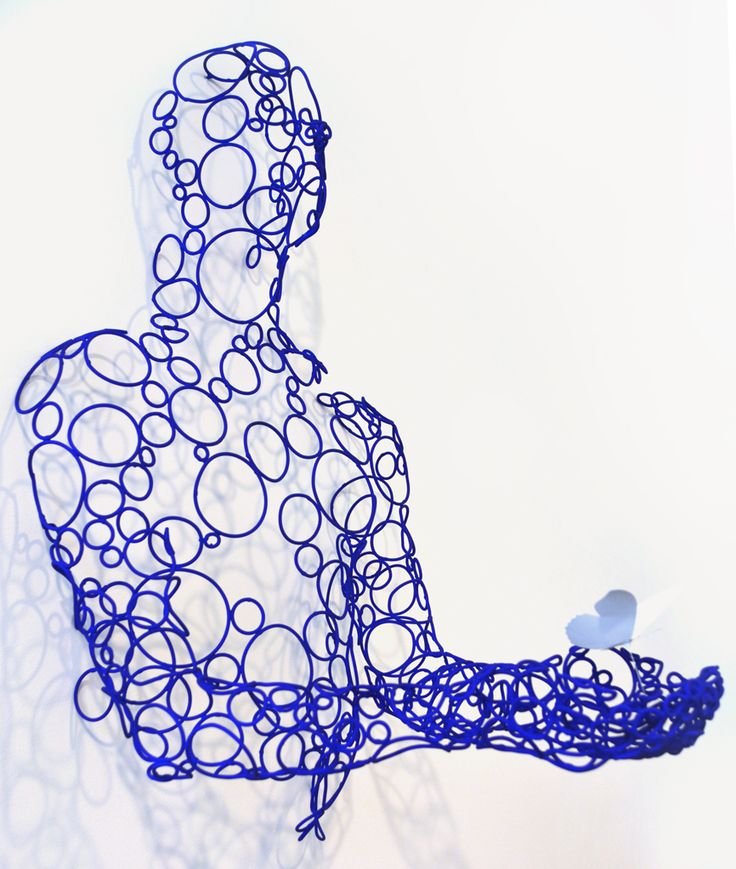


I support @ecotrain project, which also use #ecotrain. I want to believe that more and more people will start to think about things that help to make the world a better place. (с)@ecotrain. I also hope that more and more writers on Steemit will support the movement started by @eco-alex and @icmultitudes . As I truly believe that we are one and helping others means you are helping yourself.
Art from Trash: Portuguese Artist creates public awareness on effects of waste and pollution to animals #1 Eco Art Series
When we buy a new car and send an old one to a junkyard, few of us think about what would happen to it next? The same happens with a huge number of other devices that we do not need anymore. As soon as they are no longer in our vision, we instantly forget about them. They become someone else’s business.
Arthur Bordalo, known as Bordalo II, created his project "Big Trash Animals" to remind us, people, that invisible to us debris significantly affects the life around.Read more
